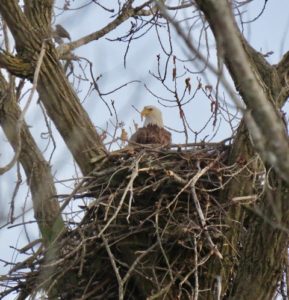
During the summer of 2020 I found myself on a boardwalk in Pheasant Branch observing a doe and her fawn eating in the brush to the side of the trail. It was fun to silently point out the wildlife to some children walking their bikes along the path. Their faces lit up when they realized they were only 10 feet away from the deer. As other trail users passed by, jogging or biking, with no interest in the deer, one of the kids was excited to whisper to me how much wildlife they had seen on their walk, including a toad near the creek, and a snake on the trail.
Now as we enter into the New Year it’s important to remember that our connections to wildlife must be mutual as we continue to restore, protect and promote the conservancy. The deer, so close to the trail, show a sense of safety, even with conservancy goers passing so close. The toad near the creek, in defense, hops away toward the water as we approach. The snake reminds us to watch our step through this habitat. We can observe these actions and understand our place, but for other wildlife it may not be as easily observed.
January marks the time of year the bald eagle begins nest building. Over the next six months bald eagles will mate, lay eggs, hatch and rear young until June when the young will be ready to leave the nest. During this time eagles become territorial and their sensitivity to humans increases. This is especially true during the nest building period during January and February, but persists through the rearing of their young. Negative interactions or disturbances from humans could result in abandoning of the nest and the young.
Over the past few years eagle sighting in Pheasant Branch have become more common and some of our resident birders have observed a nest in the conservancy. While we enjoy their return, we must enjoy it respectfully for the greatest chance at successful breeding. Federal protections for bald eagles require humans to stay back at least 300′ from active nests, and common sense is that we should be enjoying eagles from a distance especially now through June.
More information on this topic can be found from the US Fish and Wildlife Service here.
By: Hans Hilbert

